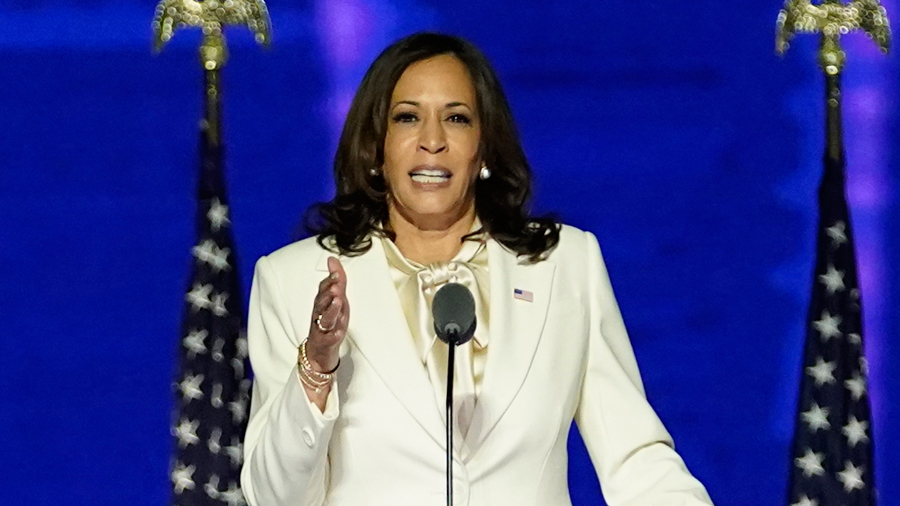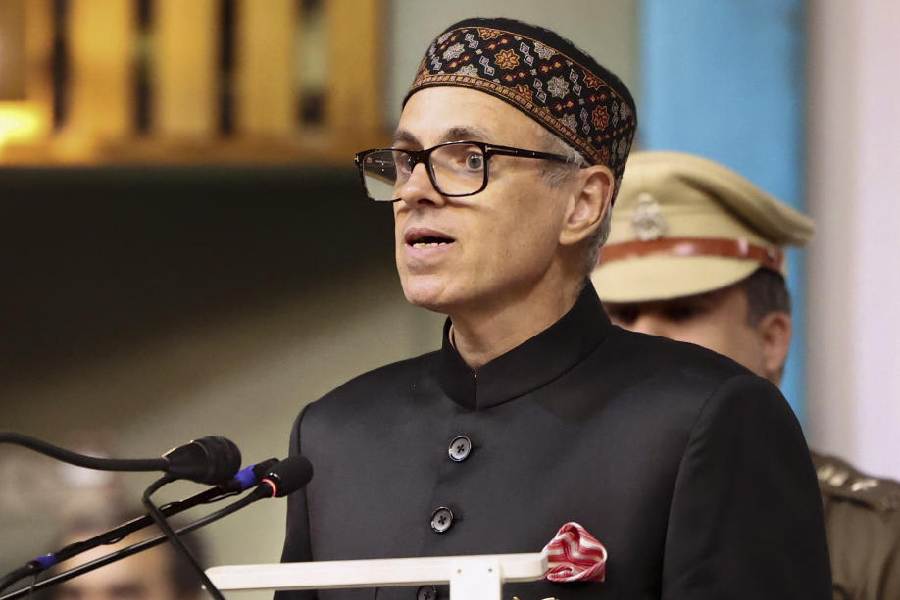The symbolism with which Kamala Harris’s election has been invested recalls Jawaharlal Nehru’s bitter analysis of the global pecking order around the time of the 1927 International Congress against Colonial Oppression and Imperialism at Brussels. Placing white Anglo-Saxons at the pinnacle, he worked down the ladder of race and colour to the then unempowered multitude of Negroes at the base.
The jubilation over the new vice-president-elect of the United States of America suggests two conclusions. First, an acute awareness of the fact that to be born below the white Anglo-Saxon pinnacle is to start life with a handicap. Second, that millions of Afro-Asians, especially Afro-Asian women, feel that a glass ceiling has at last been shattered. Of course, some have been able through the ages to overcome the twin disadvantages of sex and race; but most have not. The social, political and economic disparity between North and South and the waves of Third World migrants constantly battering the walls of the West testify to that. The powerful personal dimension to the imbalance is evident in the ancient term, varna (colour), for caste, in the equation of pallor with beauty, and the no less revealing phrases that have replaced the supposedly abandoned ‘fair and lovely’ slogan in ads for cosmetics.
One problem with all such dissections is that they rest on a simplistic black:white divide. Another is that the author’s immunity from his own findings is often assumed. There is, too, a plethora of overlapping and contradictory claims. Bhagat Singh Thind, the Sikh who entered the US in 1913 and made history by petitioning (unsuccessfully) for citizenship, was not alone in believing he was “a descendant of the Aryans of India, belonging to the Caucasian race (and, therefore) white...” Consciously or not, many Indians see themselves as white, like the “Reds” and “Whites” who are both black in Evelyn Waugh’s hilarious novel, Scoop. No wonder race and colour inspire endless posturing, public protestation and private anguish. The last two are sometimes in conflict.
Remembering Rabindranath Tagore’s brush with immigration officials at San Francisco and his angry outburst that Christ himself would be refused admission to the US “because, first of all, He would not have the necessary money and secondly He would be an Asiatic”, I was surprised to read that when on his riverine travels in East Bengal, the poet sent his card across to another barge with an unknown young English officer on board. It was even more surprising that Tagore later complained to his niece about having to entertain the Englishman as a result of his gratuitous overture. National and international relations are often individual interactions writ large.
Here in London as no doubt in Thulasendrapuram, Tam-Brams (as they are called) see the Harris triumph as an exclusive achievement. The Tamil Nadu minister who recorded his pride in “a woman from this small village” rising so high ignored 50 per cent of her ethnicity which is Jamaican, in itself a rich mix of indigenous and imported cultures. That sounded clumsy in patriarchal India where fathers determine identity (otherwise Rahul and Priyanka Gandhi would be Italians) and can only reinforce African perceptions of Asian prejudice. However, the euphoria among swathes of African women that their time has come may not be shared by Indian women outside the dwija ranks at home or in the diaspora.
Harris’s own tribute to “the generations of women, black women, Asian, white, Latina, native American women who throughout our nation’s history have paved the way for this moment” was wisely sweeping yet tactfully restricted. The Western media carefully call her “black” and “South Asian”, never “black South Asian”. Presumably being from her father’s side, Harris’s niece, Meena, cannot have grasped how profoundly she may have wounded conventional Indian sensibilities by tweeting, “My four-year-old just yelled ‘BLACK GIRLS ARE WELCOME TO BE PRESIDENT’”. Loy Henderson, an early US ambassador to India who rather fancied himself, knew no better than to cable Washington in 1948 warning that Nehru was “constitutionally unhappy” unless he was leading a global union of coloured peoples. A few months later, a conference of American diplomats, held in New Delhi, demonstrated even greater insensitivity by recommending that as many black diplomats as possible should be poured into India.
Americans jumped to the opposite extreme when Narasimha Rao visited the US in 1994. Khalistani, rebel Kashmiri and Tamil Tiger terrorists being on the rampage, the prime minister’s security chief asked the hotel management not to allow any South Asian near him. The manager, poor man, being American, didn’t know one non-white from another and ordered, according to The New York Times, that “no African-American could carry his bags, no Asian could clean his room, no Latinos could serve him his food.” Narasimha Rao “had to be served by whites only, American or European.” The paper moralized that “the US government has an interest in knowing whether a foreign head of state has been fostering racial discrimination here” while the chairman of the Massachusetts Commission against Discrimination condemned the episode as “too outrageous to be true” at a time when the US was celebrating the 40th anniversary of the Supreme Court ruling that dismantled segregation.
I have recounted that storm in a teacup to show how easily victim can be seen as offender. The slow and sadistic suffocation outside a shop in Minneapolis, Minnesota, of a 46-year-old black man by a white police officer which galvanized the Black Lives Matter movement and contributed to Donald Trump’s downfall was certainly horrendous. But it was no more so than Tamil Nadu’s 1968 Kilvenmani massacre when upper caste landlords burnt alive 44 Harijan men, women and children. The perpetrators got off scot free. If memory serves right, the appeal court held that landlords of their status did not themselves commit such crimes; they engaged agents for the purpose.
Many more such atrocities can be described. They add little to our knowledge of human depravity. What lightens the darkness a little in London are small cameos to suggest that even before she acquired a black granddaughter-in-law, Queen Elizabeth was about as colour-blind as her great great grandmother with her Munshi. Badar Azim, the footman who put up the birth notice at Buckingham Palace for Prince George, third in line to the throne, reportedly grew up in a Calcutta slum. Television coverage shows a black courtier in a frock coat receiving the prime minister when he calls on the queen. Another black officer in dress uniform placed her wreath on the tomb of the Unknown Warrior after she had touched it symbolically at last Sunday’s Remembrance Day ceremony in Westminster Abbey. These might be artfully prearranged gestures, but the signal they send to bigots is no less compelling than the ‘Black is Beautiful’ campaign.
Also present in Westminster Abbey was the resplendent Colour Sgt Johnson Beharry, born in Grenada and famous as the first living recipient of the Victoria Cross in about 40 years. His second name and ambiguous appearance have long intrigued me. Then, some years ago, I read his autobiography, Barefoot Soldier, and all was clear. “My father’s family are all of Indian descent; my mother is half-Indian, half-Negro,” Beharry explains.
Racial admixture can have its pitfalls. The results may not be guaranteed to be aesthetically pleasing or free of other complexes. But it offers a chance of escape from known evils. Like Kamala Harris, Johnson Beharry, too, could be the face of a more inclusive future.










